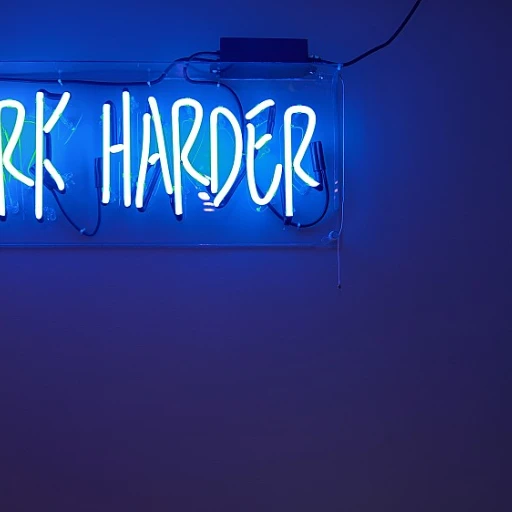
Understanding TPM and Its Role in Leadership
The Influence of TPM on Leadership Excellence
Understanding the relationship between Total Productive Maintenance (TPM) and leadership is essential for those seeking to enhance their leadership skills. TPM is an integral part of optimizing production processes and improving equipment performance, thus laying a strong foundation for leadership development. In essence, TPM extends beyond the traditional notion of maintenance. It fosters a culture where quality and efficiency intersect, helping leaders to increase overall equipment effectiveness (OEE) while minimizing small stops and long down times. This approach supports the creation of a productive environment, where maintenance personnel and talent pipelines are not only managed effectively but also cultivated to thrive. Leaders who embrace TPM learn how to manage both the immediate needs of the equipment and the long-term performance of their workforce. Through aspects like autonomous maintenance and planned maintenance, they ensure a seamless operation that maximizes production capacity. This, in turn, aids leaders in crafting a learning network and fostering a culture of continuous improvement. For organizations looking to maintain an edge in performance, integrating TPM principles into leadership development is key. By doing so, they leverage a framework that promotes the best practices in productive maintenance and talent pipeline management. For those seeking to explore more about leadership skills influenced by structured frameworks, this mastering channel management for effective leadership resource offers additional insights into integrating such concepts into leadership strategies.Key Components of TPM Training
Exploring Core Components of TPM Training
Total Productive Maintenance (TPM) Training is integral to enhancing leadership capabilities in various sectors. It equips leaders with the necessary skills to manage equipment effectively and optimize production output. Here are some of the essential components that factor into a successful TPM training program:- Autonomous Maintenance: One of the cornerstones of TPM is autonomous maintenance, which empowers frontline employees to handle simple maintenance tasks. This approach helps reduce small stops and slowdowns, boosting overall equipment effectiveness (OEE). Leaders will learn to foster a culture where maintenance personnel are proactive rather than reactive.
- Planned Maintenance: A key component of TPM training is the establishment of a planned maintenance schedule. Leaders must understand the importance of transitioning from reactive to planned maintenance to ensure long-term equipment reliability and performance. This component aids in reducing time wasted on unplanned downtimes and improving the productive use of assets.
- Quality Maintenance: Leaders need to ensure quality is integrated into every phase of production. Through TPM, they can implement best practices for maintaining high standards and addressing quality issues promptly, which minimizes defects and enhances product quality.
- Education and Training: A robust TPM academy framework focuses on continuous learning and development for the entire workforce. Leaders can leverage national learning initiatives to enhance their team's skills and competencies, building a strong talent pipeline to support organizational goals.
- Maintenance TPM Framework: Utilizing a structured TPM framework can improve maintenance processes and bolster overall operational efficiency. It enables leaders to accurately assess equipment needs and align maintenance strategies with production targets for optimal performance.
Benefits of TPM Training for Leaders
Transformational Power through Structured Learning
Total Productive Maintenance (TPM) training offers significant benefits for leaders. By following a structured learning network, leaders can achieve heightened maintenance, quality control, and performance improvements within their organizations. One advantage of TPM training is the way it systematically enhances the talent pipeline. Leaders learn to incorporate planned maintenance and autonomous maintenance to minimize small stops and slow downs. This focus on maintenance personnel education results in a robust, high-performance workforce. The profound impact on organizational productivity cannot be overstated. With a comprehensive TPM program, leaders will learn techniques that boost overall equipment effectiveness (OEE). Transitioning to the TPM framework helps in identifying long-term solutions to recurring issues, ensuring that production levels consistently meet or surpass targets. An interesting aspect of TPM training is its ability to cater to both individual and organizational growth. Leaders advance through a curriculum provided by academies, such as the national TPM academy, which combines best practices with practical application. This not only empowers leaders but also establishes a strong talent supply chain within their teams, creating talent pipelines that support future organizational needs. Moreover, TPM training encourages a culture of continuous improvement, allowing leaders to drive innovation and adapt to changing industry conditions. By maintaining open channels of communication and establishing clear expectations, leaders can foster an environment where their teams thrive. This emphasis on learning and growth translates into better overall performance and success. For leaders committed to maximizing the benefits of TPM training, understanding how to craft an effective leader standard work template can be instrumental in applying TPM principles efficiently and effectively.Implementing TPM Training in Your Organization
Introducing TPM Training Within Your Organization
Introducing Total Productive Maintenance (TPM) training in your organization is a crucial step in enhancing overall performance and nurturing leadership potential. This integration process requires strategic planning and a clear understanding of the training program's objectives and key components. Here’s how you can effectively implement TPM training in your organization to develop strong leadership skills among your workforce.
To successfully embed TPM principles into your operations, consider the following steps:
- Define Clear Goals: Establish what you aim to achieve with TPM training. Whether it’s reducing small stops in production, improving quality, or building a talent pipeline, having defined goals will guide the training process.
- Assess Current Capabilities: Evaluate your current maintenance personnel and talent supply. Understanding your workforce’s existing skills and knowledge will help tailor training programs that bridge the gaps effectively.
- Engage Your Workforce: Involve your employees from the outset. Encourage their participation in decision-making and program development to foster a sense of ownership and commitment to the training.
- Develop a Comprehensive Training Plan: Create a structured plan that includes modules on productive maintenance, planned maintenance, and autonomous maintenance. Utilize resources from a TPM academy or national learning network for the best results.
- Utilize Learning Networks: Establish a learning network within the organization where employees can share knowledge and experiences. This collaborative approach enhances learning and aids long-term retention of TPM concepts.
- Measure Performance and Adapt: Continuously monitor the training's impact on operational performance and equipment efficiency (OEE). Be willing to adapt the program based on feedback and performance data to ensure it meets the organization's evolving needs.
The introduction of TPM training won't be without its challenges. However, with persistent effort and the right strategies, it will significantly contribute to developing effective leaders and a more resilient and efficient organization. Align the training with the overall strategic goals of your business to ensure it contributes to building a sustainable talent pipeline and drives continuous improvement in operations.












